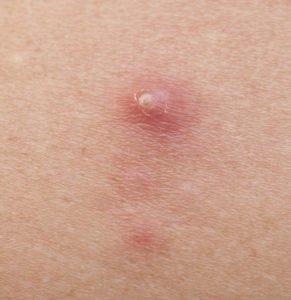How can you treat inflammation of the Achilles tendon??
Acute phase
The first goal of treatment is to reduce inflammation.
To do this, the affected ankle must be immobilized so that the micro-injuries can heal.
For the first two days, it is helpful to pack ice packs 3 times a day for 20 minutes.
So that the affected area is not irritated again, other people should be asked for help if necessary and / or supports should be used to perform painful movements.
If pain-causing activities continue to be carried out at work and in sports, there is a risk of the lesions becoming worse until the tendinitis becomes chronic.
Sometimes these measures are sufficient to completely cure achilles tendonitis.
Medicines for Achilles tendonitis
There are several types of medication used to treat Achilles tendonitis.
The doctor may prescribe pain relievers, such as acetaminophen, or nonsteroidal anti-inflammatory drugs (NSAIDs), such as ibuprofen (Dolormin) and diclofenac (Voltaren), but these can cause side effects, such as abdominal discomfort or stomach ulcers.
These drugs are effective in relieving pain; they can also be applied to the affected area in the form of cream or gel.
If the symptoms of tendinitis persist for more than 2 months, medicines containing cortisone can be injected directly onto the tendon.
These drugs can be very effective because they are powerful pain relievers, but the effects will not last if the tendon is not immobilized.
Warning: Cortisone can have serious effects in diabetes because it makes it difficult to regulate insulin levels; it can also weaken the tendons so that they run the risk of tearing.
A medical prescription is required to take cortisone.
Physiotherapy for Achilles tendonitis
Manipulation is one of the most effective therapies because it helps to release the ankle joint blockage and stimulate the blood flow, which makes healing possible.
The classic massage of the calf is less effective.
Some publications speak of good results with shock waves for the Achilles tendon; a study compared runners and people who do no sport; the athletes had a higher percentage of healing.
One measure that shows excellent results in the treatment of tendinitis of the Achilles tendon is the use of an orthopedic insert; if carried out correctly, the strain and overstretching of the tendon is reduced and a functional rest position is promoted.
After tendinitis in the ankle is the Reinforcement of the greatest importance because people with a strong calf do not get this tendinitis.
The diseases, where shock wave therapy shows the best results enthesitis, Heel Spurs and pseudoarthrosis.
Physiotherapy techniques such as laser, ultrasound, and shock wave therapy can help relieve swelling and pain because they have an anti-inflammatory effect.
Tecar therapy does not help with tendonitis.
These applications usually have a long-term effect.
To relieve the tendon, the use of an ankle bandage or kinesio taping is recommended.
Manual therapy is very effective in treating tendinitis; Cyriax and myofascial manipulations are particularly suitable because they remove adherence and fibrosis of the tendon.
When the pain subsides, an exercise program to strengthen the tendon-muscle unit can be followed.
Tendon stretching exercises are discouraged because they temporarily aggravate pain and cannot heal tendinitis.

Natural healing methods against achilles tendonitis

Kinesio taping of the Achilles tendon for tendinitis or tendonosis
Taping for achilles tendinitis
Effect: draining. Shape: an “I” stripe. Length: 25-30 cm. Hold the foot in a neutral position and place the band under the heel. Pull your foot up and apply the tape without tension; follow the course of the Achilles tendon.
To relieve the tendon swelling, arnica ointment can be applied or a clay pack can be put on; However, these measures are not sufficient for healing because the inflammation persists as long as the tendon fibers are damaged.
Eccentric exercises
Some studies have compared the results of various procedures for muscle strengthening in tendon degeneration and have led to the realization that eccentric exercises have a better effect than conventional physiotherapy treatments. In these exercises, the muscle is stretched when under stress (the muscle is stretched while it is tense). In concentric exercises, exactly the opposite happens: the muscle shortens during tension, the "classic" method in strength training.
With isometric exercises, the muscle length remains constant, the body is not moved and must counteract a force.
It has been shown that the eccentric calf exercises have a great effect on Achilles tendon treatment. If the patient no longer feels pain while doing the exercises, the load can be increased. There may be undesirable side effects such as muscle numbness or worsening inflammation.
These effects are noticeable if the exercises are performed too quickly, incorrectly or with excessive weight.
exercises
There are two types of exercise: in the first the knees are pressed (activation of the two-headed calf muscle), in the second bent (activation of the clod muscle).
- Lowering the heel with pressed knees: stand upright with the front part of the foot on one step, the heel is initially directed upwards; then lower the heel until the foot is straight and parallel to the floor.
- Lowering the heel with bent knees: as on the previous exercise, stand on one step, but this time the knees form a 45 ° angle; lower the heel until the foot is straight and parallel to the floor.
When the heel is lowered, the other leg must always be used to return to the starting position (to limit concentric muscle tension). The hands may be used to stabilize the body before and during the exercise.
These exercises should be performed in 3 rounds with 15 repetitions (3 × 15), twice a day, 7 days a week.
Do the exercises until the pain disappears; use only your own body weight. When the pain has completely subsided, the load can be slowly increased with the help of dumbbells and barbell bars.
variant
- Stand upright against a wall, one leg in front of the other. The toes of the front foot touch the wall. Shift the weight to the front foot. Now bend your knee and try to touch the wall. Has succeeded in retreating a few centimeters and pushing forward again. Pay attention to an upright posture during the exercise. Do 3 passes with 10 repetitions for each leg.
- Calf machine (fitness machine, also called Calf Machine): place the front foot on the edge of the tread, upright posture, the feet are shoulder-width apart. With your shoulder weight on, lower your heels to below the step surface. Then pull back up to the level of the step surface to complete the exercise. Do 2 passes with 10 repetitions each.
- Fitness band: sit down, pull on one leg, push the other forward. Now place the tape around the foot of the outstretched leg. Stretch your toes forward, away from your body. Now pull the band towards your body and let your toes come back to neutral; always resist the movement. Do 3 passes with 12 repetitions for each leg.
Running and ball sports (tennis, soccer, basketball, etc.) should be avoided as long as the symptoms have not completely disappeared.
Cycling is possible, but gradients and spurts should be avoided; the foot should be as far forward as possible on the Pedal put on; kicking with the toe is a much greater strain on the tendon than kicking with the heel.
Surgery for Achilles tendonitis
Surgery is not a common solution to tendinitis, but in some cases, surgery to treat tendonitis and calcification may make sense.
If the surgeon speaks of a tenosynovialectomy, this means the removal of the tendon sheath. The tendon sheath releases synovial fluid, which is important for lubricating the joint, but if the amount of fluid is too large, the tendon sheath swells.
Another intervention is the arthroscopic removal of the lime deposits; it does not require long post-treatment.
How long does recovery take? The healing prognosis
A traumatic tendinitis heals faster than one caused by overwork.
If the affected person continues the repetitive activities that triggered the tendinitis, the inflammation cannot cure and becomes chronic.
Acute inflammation should cure within a month of immobilization and physiotherapy.
The healing times of chronic tendinitis are longer, but if properly treated, swelling and pain disappear within 2-4 months.
RELATED ITEMS
-

Muscle cramps in the legs, symptoms and therapy
Leg muscle cramps are sudden, strong, painful, and involuntary contractions of the muscle. The cramps usually occur at night and…
-

Leukemia in children: symptoms, therapy, prognosis
Martina Feichter studied biology with an elective in pharmacy in Innsbruck and also delved into the world of medicinal plants. From there it was…
-

Bad urine odor, causes, symptoms and therapy
Bad urine odor can have a harmless cause, but if it persists for several days, it can indicate an important illness…
-

Abscess at the po – cause, symptoms, therapy
If you see the pictures of an abscess on the buttocks on the Internet, you will surely sometimes feel different, right? That could be because many people are first…
